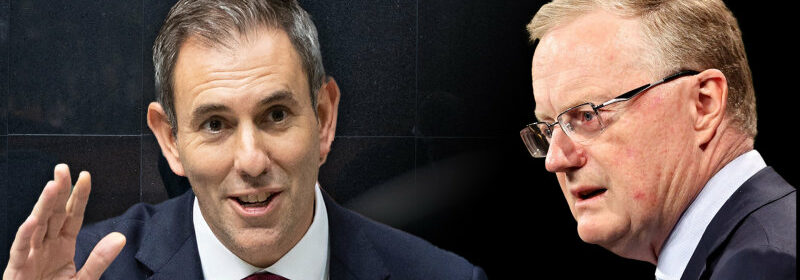RBA board review to allow households more time to absorb interest rate rises

Save articles for later
Add articles to your saved list and come back to them any time.
Households will have more time to absorb interest rate rises and have a better idea of how the economy will perform after a scathing review of the Reserve Bank urged a generational overhaul of the institution to bring it in line with its international peers.
The review, released today, recommends the creation of a new interest rate setting board, dominated by experts, meet 8 times a year rather than every month. The board would be separate from the current board that oversees the bank’s day-to-day operation.
Eight meetings a year by a board of experts are key findings of a review of the Reserve Bank.Credit: Peter Rae
The bank’s mandate, in place since 1959, would be condensed to just focus on inflation and the nation’s jobs market with the RBA required to be more open about how it expects the economy to perform depending on interest rate settings.
The proposals would also give more power to the bank to be frank about its views on government policy settings in an effort to ensure fiscal and monetary policy were working in the same direction.
Treasurer Jim Chalmers released the near-300 page review and its 51 recommendations on Thursday. It is the first independent investigation of the bank since the early 1980s.
The review panel was made up of international monetary policy expert Carolyn Wilkins, who sits on the Bank of England’s financial policy committee, the interim director of the Crawford School at the Australian National University, Renee Fry-McKibbin, and the secretary for public sector reform Gordon de Brouwer.
They found that while the bank had performed very well over the past 30 years, there were clear areas of pressure that required substantial change.
“The more complex and uncertain environment has tested the RBA and its monetary policy framework. This has underscored some of the strengths of current arrangements. But, in a number of recent episodes, it has highlighted clear opportunities to improve systems and processes,” they found.
The biggest change proposed is the creation of a separate monetary policy committee to set interest rates.
It would include the bank governor, their deputy and the Treasury secretary plus six people who have expertise in macroeconomics, the financial system, labour markets or the supply side of the economy.
This would be a major departure from the current system under which the RBA board is made up of non-monetary policy experts, mostly recruited from the business community. But it would bring the bank into line with its international peers.
The review found the current board arrangement was struggling, while saying a new specialist committee should have a strong independent voice on monetary policy.
“The Reserve Bank board’s current processes do not provide members with enough information,
time or support to sufficiently explore policy options and strategies or to challenge RBA views,” it found.
“Moreover, on some occasions the board has not requested or been given information relevant to
its decisions or has not been fully involved in significant policy decisions.”
RBA governor Philip Lowe, whose term ends in September, would be a key member of both a governance committee and one that sets interest rates.Credit: Michael Quelch
The review panel examined three key periods – between 2016 and 2019, the bank’s COVID policies and its response to last year’s surge in inflation – and found the RBA wanting.
It found the bank would have benefitted from “stronger decision-making arrangements” and a more specialist board during COVID when the bank not only took the cash rate to a record low but also printed hundreds of billions of dollars to support the economy.
It also said the bank was initially slow to respond to last year’s inflation outbreak, criticising the RBA’s focus on wages growth as a driver of price increases.
“An over-emphasis on wages as a driver of persistent inflation, reliance on forecasting
and modelling tools that offered limited insights on the supply side of the economy, and the
way forward guidance and the yield target had been designed and used all contributed,” they found.
“Deeper consideration of monetary policy strategy, risks and opposing views, and use of a richer suite of models and data, may have reduced the risk of misjudging inflation.”
The bank’s long-standing charter requires it to focus on the stability of the currency, full employment and the “economic prosperity and welfare” of all Australians. The review recommendations stability of the currency be changed to stability of prices and full employment.
Stability of prices would remain keeping inflation between 2 and 3 per cent but the review backs the bank being more open about the path of interest rates to deal with price pressures.
This includes a press conference by the bank governor after every meeting and a requirement that members of the monetary policy committee speak publicly at least once a year.
The current agreement between the RBA governor and treasurer on the inflation target would be broadened to encompass the impact of budget settings on interest rate settings.
Chalmers said the government backed all 51 recommendations in principle, signalling he would move quickly to put them in place.
“Implementing these recommendations will ensure our monetary policy framework is the best it can be and boost confidence in our central bank,” he said.
“The government will institute more open and transparent processes for appointments of external members to the RBA boards. We have already taken steps in this direction through an expression of interest process for the latest round of board appointments.”
The review said the government should have all changes in place by the middle of next year.
Cut through the noise of federal politics with news, views and expert analysis from Jacqueline Maley. Subscribers can sign up to our weekly Inside Politics newsletter here.
Most Viewed in Politics
From our partners
Source: Read Full Article

